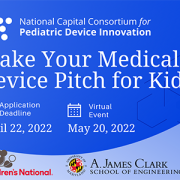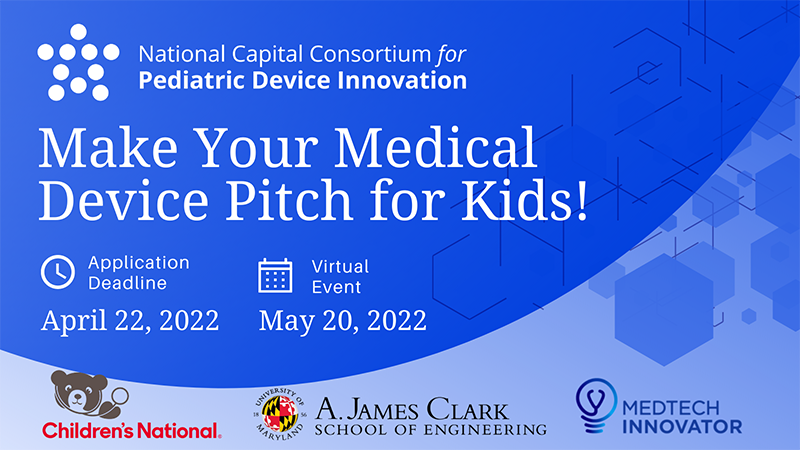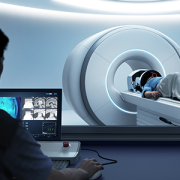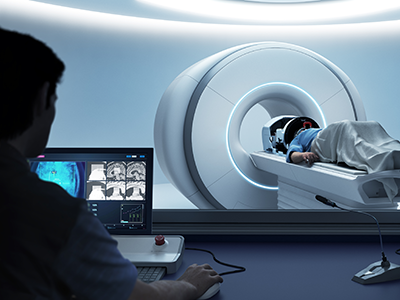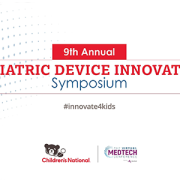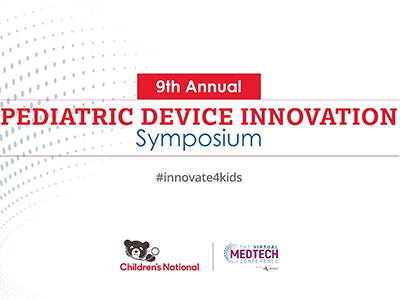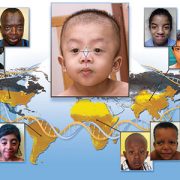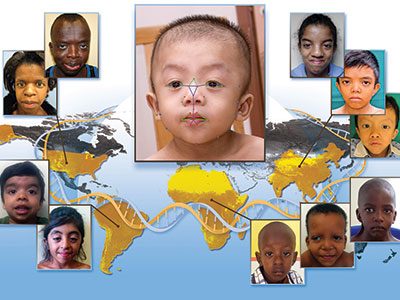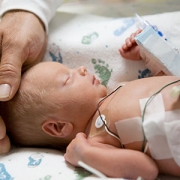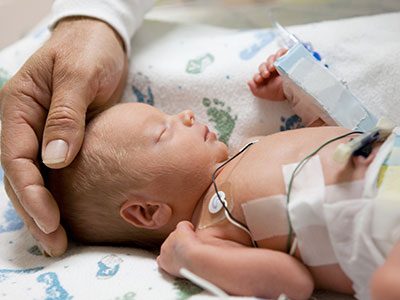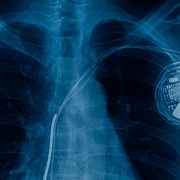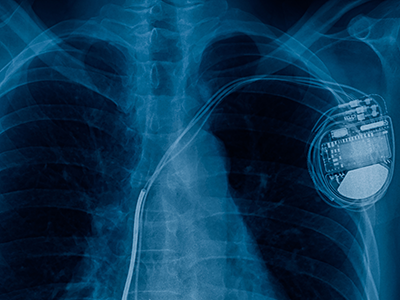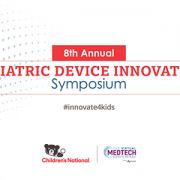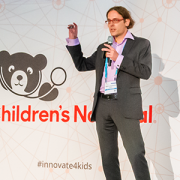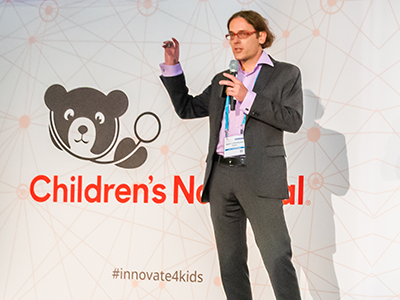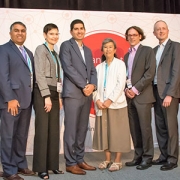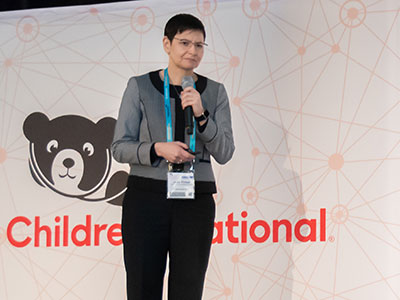
“Having spent 30 years on the frontlines of pediatric healthcare as a surgeon, I saw so much innovation focused on adult medicine and not on pediatric populations. Instead, we were trying to adapt adult devices for use in children, which is not an effective solution,” says Dr. Newman.
The advancement of children’s medical devices in the U.S. continues to significantly lag behind adult devices for many reasons. A dedicated group of public and private sector healthcare leaders are working together to change that trend. In culmination of its first stage of work, the System of Hospitals for Innovation in Pediatrics – Medical Devices (SHIP-MD) initiative recently held a dynamic 3-day public workshop to further develop this groundbreaking public-private partnership, which is currently in its pre-consortium/conceptual phase.
Children’s National leaders and clinicians were among the pediatric healthcare experts who contributed to robust discussions about how to build and nurture a public-private partnership system that will safely accelerate the advancement of pediatric medical devices.
The workshop was developed and guided by a multi-stakeholder group including the Critical Path Institute (C-Path), the U.S. Food and Drug Administration’s (FDA) Center for Devices and Radiological Health (CDRH), AdvaMed, the American Academy of Pediatrics (AAP) and leaders of pediatric health systems.

“We must strive to improve medical devices for children, which historically lag five to 10 years behind adults. For many children, that can be a lifetime,” says Dr. Beers.
Reflecting its ongoing commitment to bridging the pediatric innovation gap, Children’s National Hospital experts co-led discussions throughout the program, which explored ways to improve children’s health by transforming the existing medical device ecosystem to stimulate investment and innovation in pediatric devices.
Children’s National Hospital President and CEO Kurt Newman, M.D., and Lee Beers, M.D., medical director for the Child Health Advocacy Institute at Children’s National Hospital served as opening session speakers, providing their insights into the current state of innovation in pediatric devices and why a new approach, such as SHIP-MD, is vitally needed.
“Having spent 30 years on the frontlines of pediatric healthcare as a surgeon, I saw so much innovation focused on adult medicine and not on pediatric populations. Instead, we were trying to adapt adult devices for use in children, which is not an effective solution,” says Dr. Newman. “Children’s National Hospital is proud to contribute to SHIP-MD’s pioneering efforts to address this critical disparity and reform pediatric device development in order to ensure that children, regardless of their age or condition, have access to the life-changing treatments and technologies they need to grow up stronger.”
An op-ed recently penned by Dr. Newman in STAT further explores the importance of public-private partnerships like SHIP-MD that are focused on fast-tracking innovation in medical devices for children.
Beers, who also serves as president of AAP, highlighted the fact that, as medical technology continues to advance, children are not reaping the benefits.
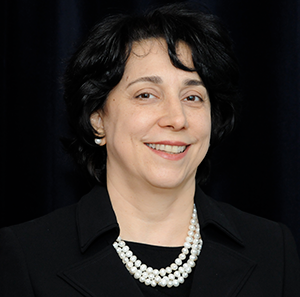
“Through the SHIP-MD initiative, we can work to ensure that the discipline of medical device development is equally understood and appreciated by its participating hospitals,” says Dr. Eskandanian.
“We must strive to improve medical devices for children, which historically lag five to 10 years behind adults. For many children, that can be a lifetime,” says Beers. “Much more needs to be done to address the countless hurdles that prohibit children from accessing the technology they need. The disproportionate rate of disease in minority children is another indicator that we must not cut corners as we look to improve pediatric innovation access.”
Kolaleh Eskandanian, Ph.D., M.B.A., P.M.P., vice president and chief innovation officer at Children’s National Hospital and principal investigator for the FDA-funded National Capital Consortium for Pediatric Device Innovation (NCC-PDI), co-led the Qualifying Hospital Criteria panel, which addressed the importance of expanding the SHIP-MD network to medical institutions that have the infrastructure for the safe conduct of research.
“Through the SHIP-MD initiative, we can work to ensure that the discipline of medical device development is equally understood and appreciated by its participating hospitals. As champions of pediatric innovation, we must work to provide equitable access to device trials for every patient that qualifies,” says Eskandanian. “The goal of the Qualifying Hospital Criteria group is to introduce criteria that hospitals must meet in order to provide a safe environment to conduct pediatric medical device research and trials.”
Co-leading the Regulatory panel was Francesca Joseph, M.D., FAAP, a pediatrician at Children’s National Hospital and co-investigator for NCC-PDI. This workshop explored opportunities to address regulatory needs by refining current processes and considering new options to promote advancement of pediatric medical devices.

Co-leading the Regulatory panel was Dr. Francesca Joseph, a pediatrician at Children’s National Hospital and co-investigator for NCC-PDI.
In the closing session, Eskandanian and other panel experts recapped the workshop and discussed core factors that will help determine whether or not SHIP-MD’s network is prepared to enter Phase II, the consortium phase. This phase includes the development of a strategic plan that incorporates the short, medium and long-term goals needed to create and implement the framework enabling the official launch of SHIP-MD.
During his talk, Dr. Newman also shared the strategic steps being taken by Children’s National that complement the SHIP-MD initiative in advancing pediatric device innovation. Among these is the creation of the Children’s National Research & Innovation Campus (CNRIC), the first-of-its-kind pediatric research and innovation hub located in Washington, D.C., which includes on-site partners JLABS, Johnson & Johnson Innovation’s life science incubator, and Virginia Tech University. The campus will nurture a rich ecosystem for pediatric innovation in the nation’s capital.

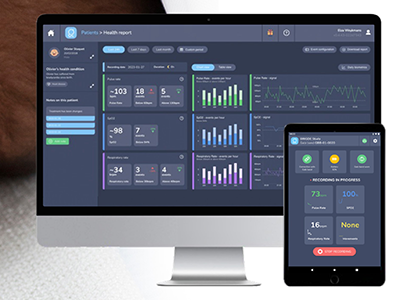


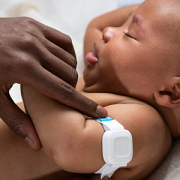
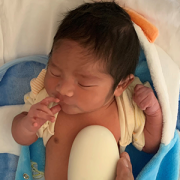
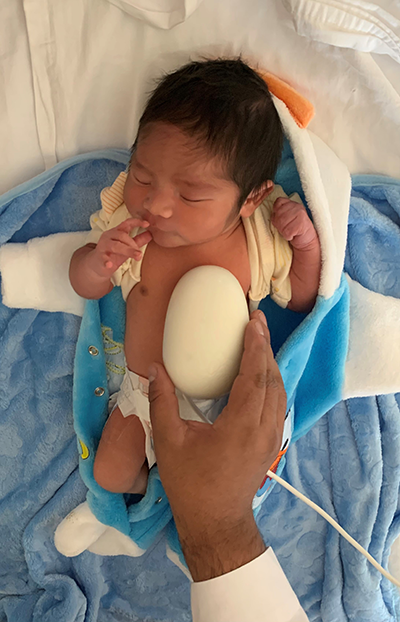

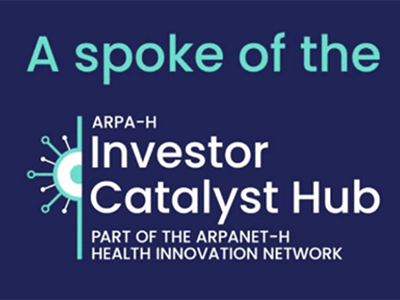 The hospital will advocate for the unique needs of children as part of nationwide network working to accelerate transformative health solutions.
The hospital will advocate for the unique needs of children as part of nationwide network working to accelerate transformative health solutions.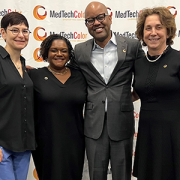
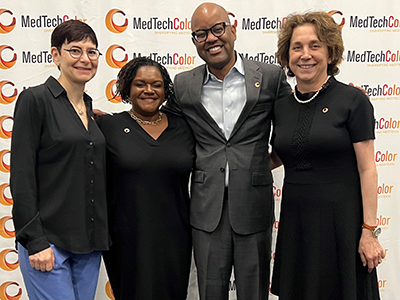 Children’s National Hospital was awarded nearly $7.5 million in a five-year grant to continue its leadership of an FDA-funded pediatric device consortium. Building upon a decade of previous consortium leadership, the new consortium is Alliance for Pediatric Device Innovation (APDI) and features a new and expanded roster of partners that reflects its added focus on providing pediatric innovators with expert support on evidence generation, including the use of real-world evidence (RWE), for pediatric device development.
Children’s National Hospital was awarded nearly $7.5 million in a five-year grant to continue its leadership of an FDA-funded pediatric device consortium. Building upon a decade of previous consortium leadership, the new consortium is Alliance for Pediatric Device Innovation (APDI) and features a new and expanded roster of partners that reflects its added focus on providing pediatric innovators with expert support on evidence generation, including the use of real-world evidence (RWE), for pediatric device development.